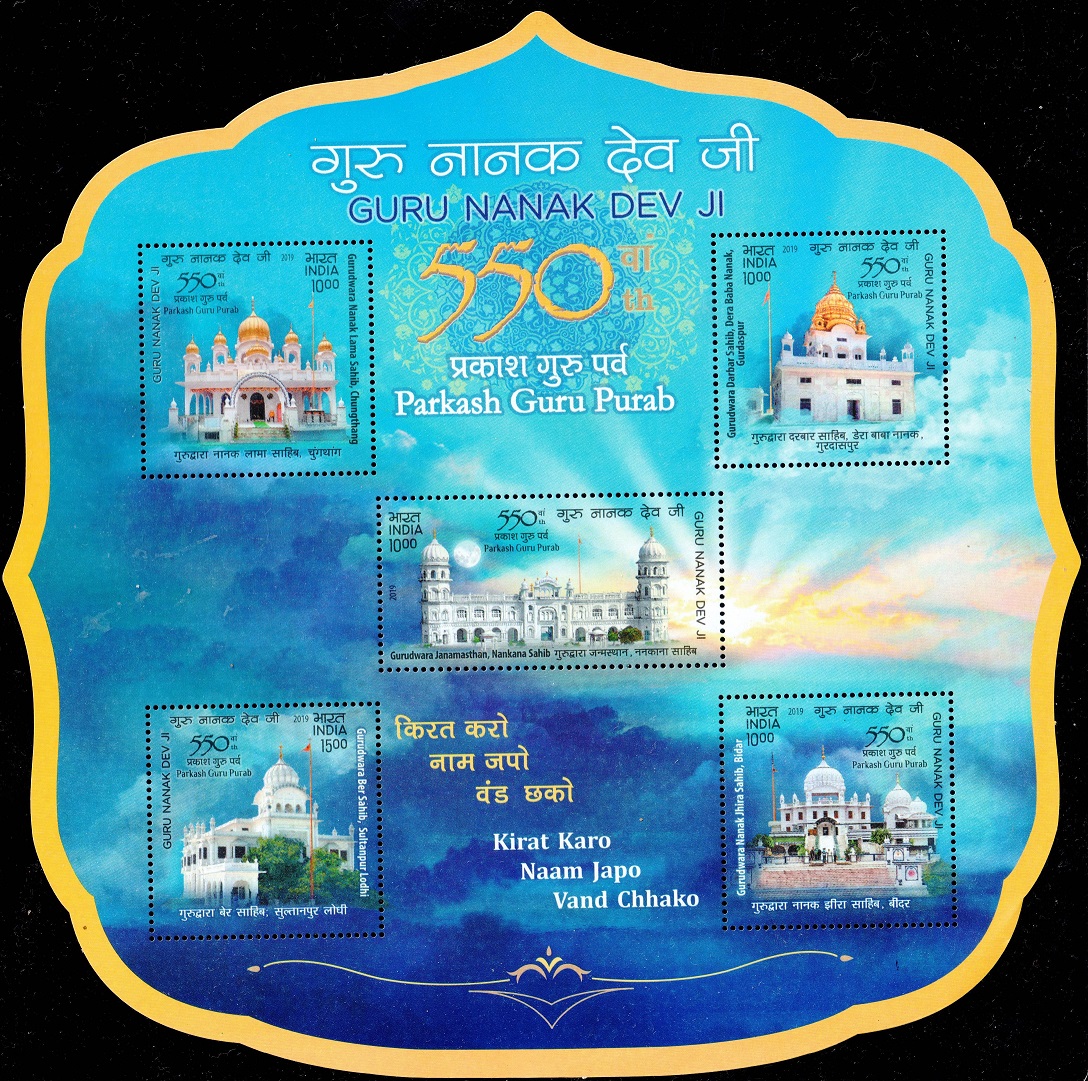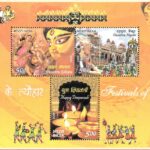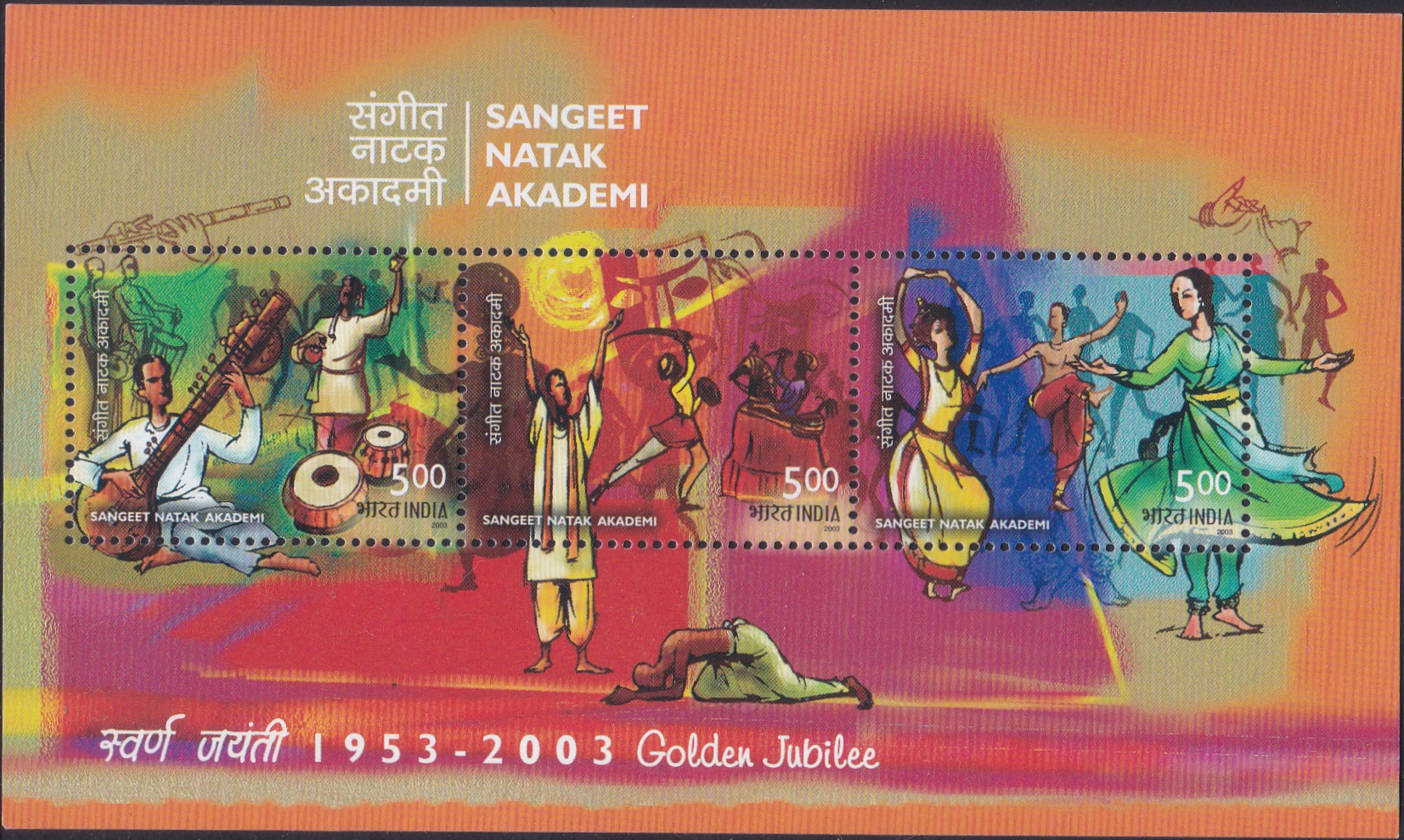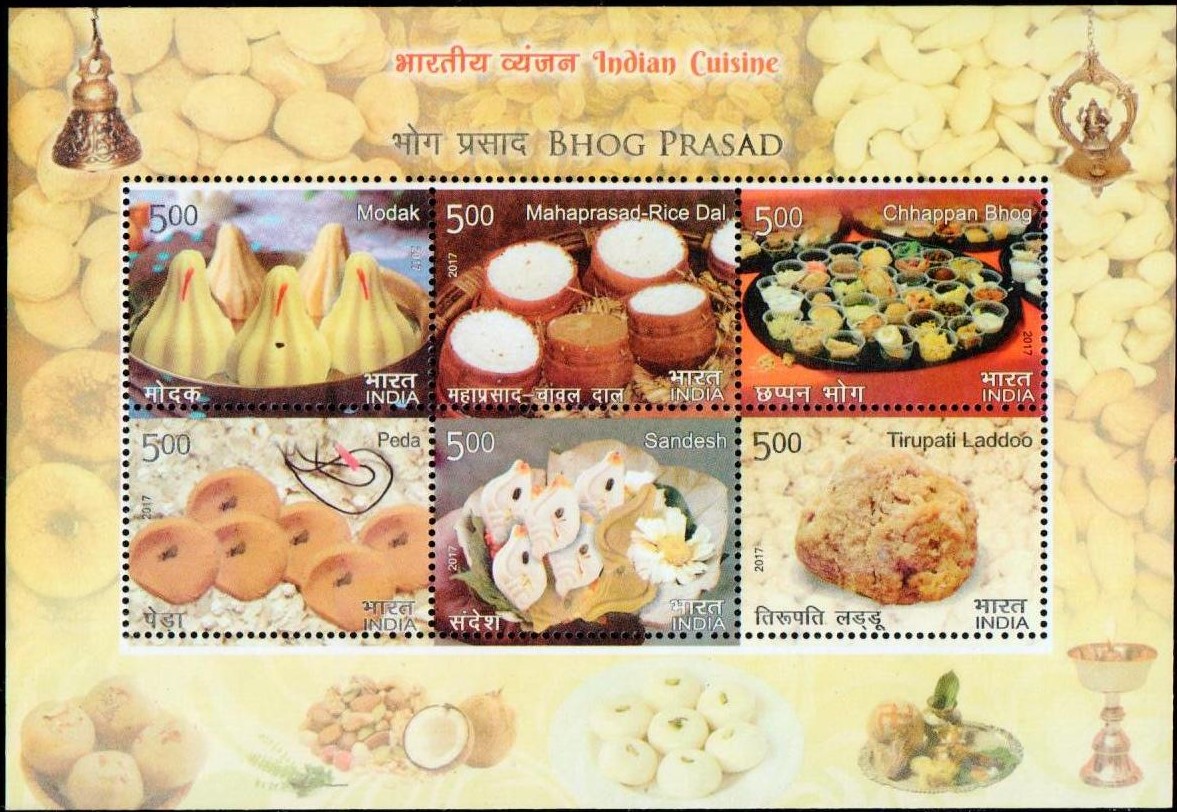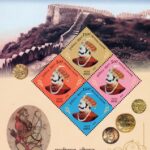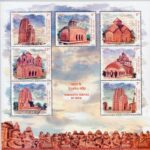
ASEAN-India Commemorative Summit 2018
Complete set of 11 nos. of commemorative postage stamps on the 25th Anniversary of ASEAN–India Dialogue Partnership :
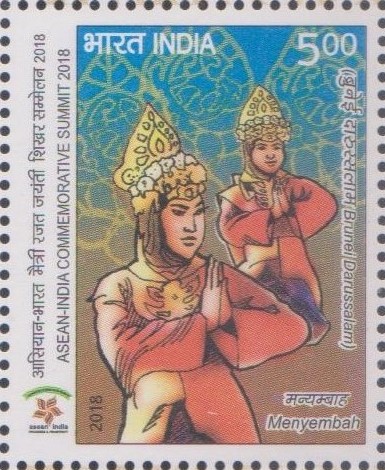
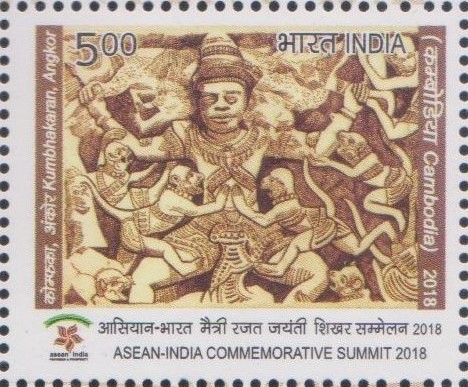
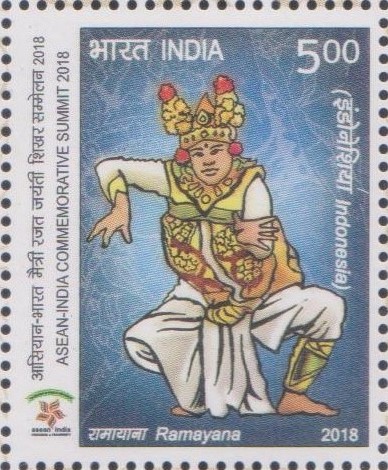
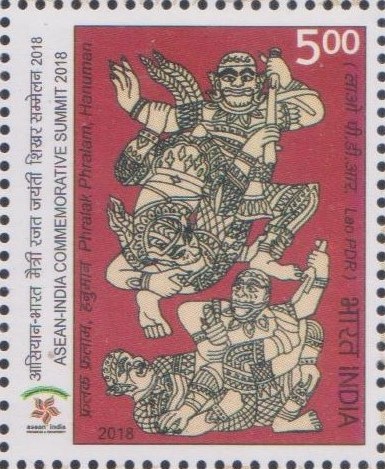
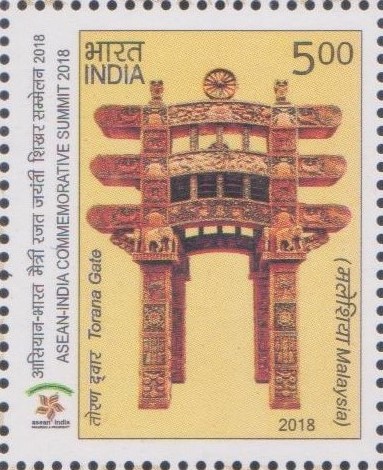
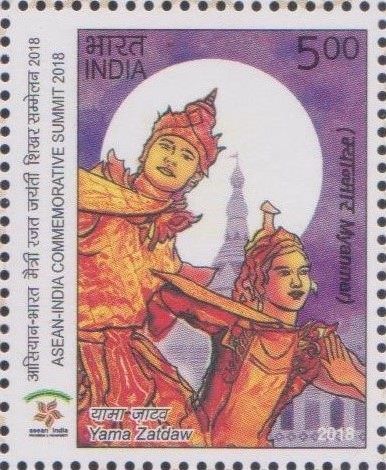
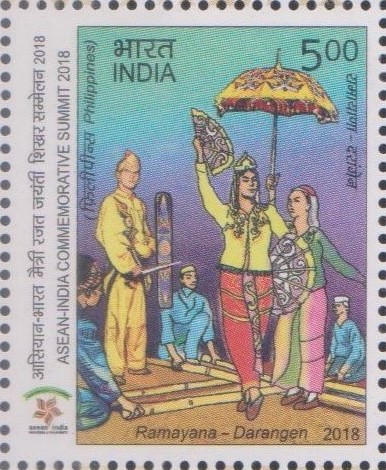
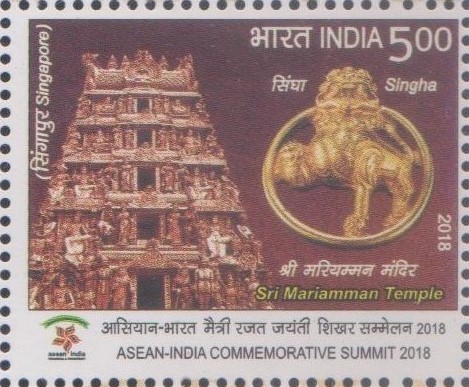
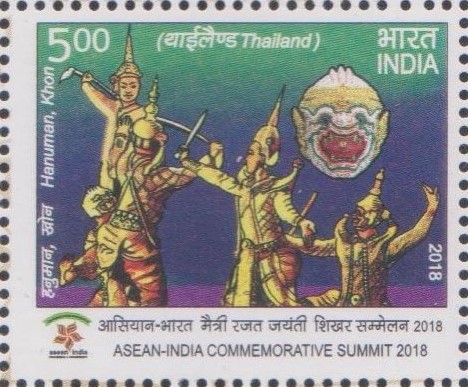
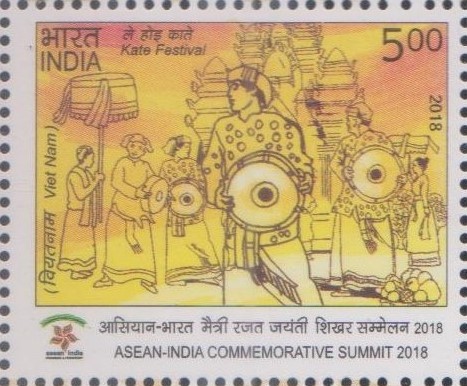
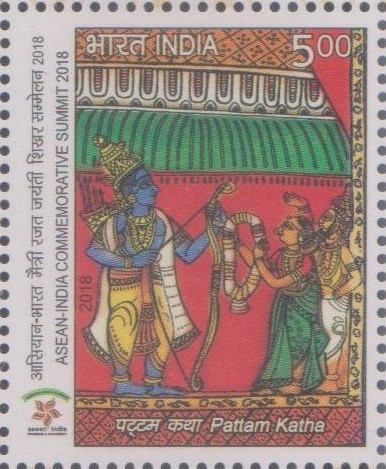
 Issued by India
Issued by India
Issued on Jan 25, 2018
Issued for : Department of Posts is pleased to issue a set of 11 Commemorative Postage Stamps on ASEAN-INDIA COMMEMORATIVE SUMMIT 2018 on the occasion of 25th anniversary of ASEAN-India Dialogue Partnership.
Credits :
Stamps/Miniature Sheet/Sheetlets/First Day Cover/Brochure : Shri Sankha Samantha
Cancellation Cachet : Smt. Alka Sharma
Type : Miniature Sheet, Mint Condition
Colour : Multi Colour
Denomination : 500 Paise (11)
Stamps Printed : 0.5 million each in the form of sheetlets
Miniature Sheet Printed : 110000
Printing Process : Wet Offset
Printer : Security Printing Press, Hyderabad
About :
- The Association of South-East Asian Nations (ASEAN) comprises of Indonesia, Singapore, Philippines, Malaysia, Brunei Darussalam, Thailand, Cambodia, Lao PDR, Myanmar and Viet Nam. India’s focus on a strengthened and multi-faceted relationship with ASEAN is an outcome of the significant changes in the world’s political and economic scenario since the early 1990s. India’s search for economic space resulted in the ‘Look East Policy’. The Look East Policy has today matured into a dynamic and action oriented ‘Act East Policy’.
- India is hosting the ASEAN – India Commemorative Summit 2018 in New Delhi. The theme for the Commemorative Summit, ‘Shared Values, Common Destiny’, has been displayed in the series of the 11 stamps, which have been conceptualized to thread together our historical and civilizational links that date back to over two millennia. These shared linkages which find numerous examples in texts, folklore, festivals, architecture, literature, dance-forms, music, religion, culture, motifs, symbols and everyday life may seem as quotidian, they however, are subtle reminders of a deep and enduring bond build on trust, respect and tolerance for diversity. Among these linkages, is the Ramayana, the ancient Indian text, that has its representations and interpretations in variety of dance, ballet and theatre art forms across almost all ASEAN member states, binding and connecting our common heritage.
- Below is a brief description of the eleven individual stamps:
- Brunei Darussalam: Menyembah, the Bruneian greeting usually offered to Royalty which is akin to the Indian Namaskar is depicted in the stamp. The mudras or hand gestures found in dance forms across Southeast Asia are a distinct and recognizable connect.
- Cambodia: The scene portraying the attack of the monkey warriors on Ravana’s brother Kumbha karan, engraved on the walls of the Angkor Wat Temple complex, is depicted in the stamp.
- Indonesia: The Indonesian version of the Ramayana was believed to be written during the Medang Kingdom (732-1006 AD) in Central Java. Also known as the Kakawin Ramayana, its depiction has been considered to be of great artistic expression and is very well known.
- Lao PDR: Phralak Phralam, the title referring to the brothers Lord Rama and Lakshamana, is the national epic of Lao PDR, that also boasts of significant Buddhist influences. Notably popular in Phralak Phralam is the depiction of Hanumana, representative of strength, agility, devotion, and intelligence.
- Malaysia: A key milestone that represents the Indian-Malaysian heritage connect is the Torana Gate, a gift from the Government of India to the Government of Malaysia in 2015. The Torana, an elaborate gateway, is usually depicted in Buddhist, Hindu and Jain worship places. The Gate, with both Hindu and Buddhist influences, depicts the Jatakas (stories of the previous birth) of Gautama Buddha.
- Myanmar: Yama Zatdaw, an adaptation of the Ramayana, is prevalent in Myanmar. Yama translates as Lord Rama and Yamayana is the equivalent of the Ramayana, while Zatdaw refers to the play enactment or part of the jataka tales. The storyline under Yama Zatdaw is true to its core with added Myanmar traditions, cultures, costumes, and customs noticeably producing a beautiful rendition of the epic.
- Philippines: The scene depicted is from the famous and graceful dance form, Singkil, that is derived from the Darangen, an adaptation of the Ramayana. The lead dancer, a lady in the role of Putri Gandingan, graciously steps in and out of closing bamboo poles arranged in either a parallel, rectangular, or criss-cross fashion while manipulating either apir (fans), mosala (scarves), or even just their bare hands. It is a popular dance performed during celebrations and other festive entertainment.
- Singapore: The Sri Mariamman Temple is Singapore’s oldest Hindu temple founded in 1827. The temple is symbolic of India’s relation with Singapore that transcends beyond just economic relations. The other image is of a gold earring that was found in South India and is currently housed at the Indian Heritage Centre, Singapore. It bears a lion or “singha” motif, tying back to its origins in Singapore. The lion is an important symbol in the narrative of Indian interactions with Southeast Asia and the island of Singapore (previously known as Singapura) derives its name from the Indic word simha or singha.
- Thailand: The stamp is a pictorial representation of Khon, a traditional dance-drama genre from Thailand that derives from the Ramakien, an adaptation of the Ramayana. The show features athletic dance moves, traditional singing, and all dancers in masks forcing them to elucidate purely through movement. The other image depicted is of the Thai Hanuman, the most popular and recognisable character in the country.
- Viet Nam: The Kate Festival is the largest traditional festival of Viet Nam’s Cham Brahman people celebrated in Ninh Thuan province and recognized by Viet Nam as a National Intangible Cultural Heritage. It is celebrated for the Cham to express their gratitude to their ancestors. The Cham Temple tower, depicted in the background, is from the Champa civilization of central Viet Nam and part of the My Son temple sanctuary, dating back to 4th century AD, dedicated to the worship of Lord Shiva. Government of India is helping restore portions of the My Son complex.
- India: Scene of Rama – Sita Swayamvar is depicted in Pattam Katha, cloth-based scroll painting from Andhra Pradesh (Source – Indira Gandhi National Centre for the Arts).
- Text : Based on the information received from Ministry of External Affairs.


